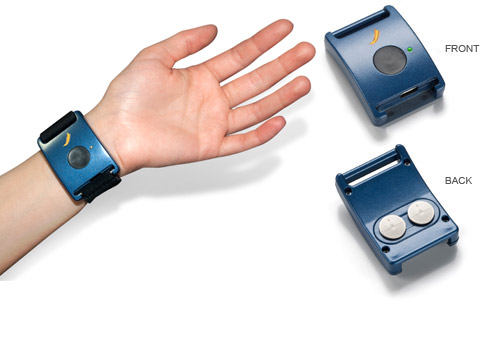A new watch-like device helps to monitor emotions in individuals with autism so as to help predict and mitigate meltdowns.
The so-called, Q-Sensor, is a wearable, wireless biosensor that measures emotional arousal via skin conductance. The sensor works by detecting and monitoring electrodermal activity (EDA) that increases during periods of excitement and decreases during periods of boredom and can also measure temperature.
EDA refers to electrical changes in the skin that occur when the skin receives innervating signals from the brain. For most people, if you experience intense physical exertion, increased cognitive workload or emotional arousal, your brain sends signals to your skin to start sweating. While thinking, for instance, may not always cause use to sweat, our skin would say otherwise and the device is able to measure these minute changes. Measuring in at just four square centimeters, the device collects data that can be downloaded to a computer.
The electrical conductance increases in a measurably significant way, even if we cannot pick up on it. The technology is capable of deciphering whether physiological changes are related to the person or the environment. This is useful for autistic individuals because it will help them to understand if entering a hot room or riding a roller coaster may cause a spike in emotional activity.
The readings and data collected from this sensor are different from that collected by heart rate. Stimulated by the Autonomic Nervous System, our heart reacts to both the Sympathetic Nervous System (SNS) and the Parasympathetic Nervous System (PNS) and researchers say that currently, there is no accurate way to separate the two when analyzing the heart.
SNS refers to our “fight or flight” reactions, but also activates with positive excitement and anticipation. The skin is believed to be the only organ to react only to SNS allowing the device to get a more precise and direct reading because it only monitors the skin.
Worn in a wristband, the device is unobtrusive and allows the individual wearing it to go about their daily life normally. The shape and fit also make it ideal for long-term measurement in clinical and therapeutic research.
Researchers say the sensor shows particular promise for those on the autism spectrum who have difficulty conveying their emotions.


